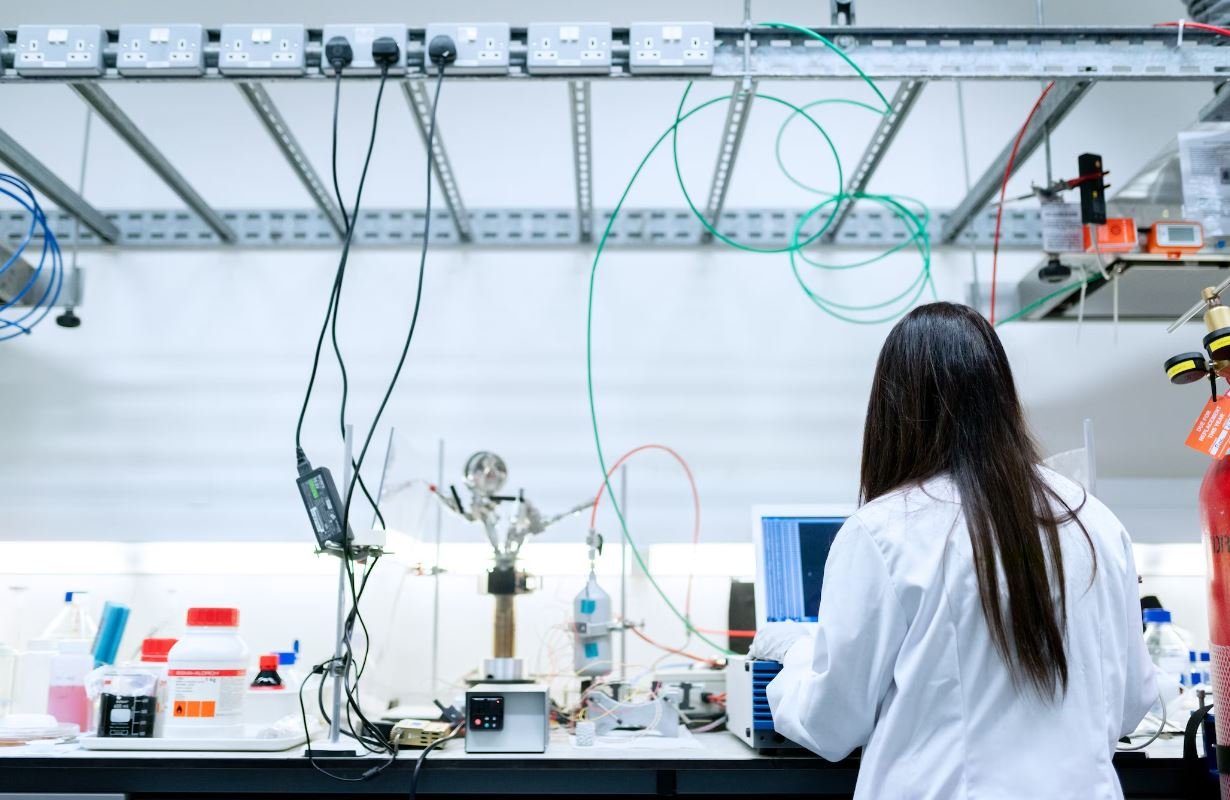AI Interaction Issues with Humans
Artificial Intelligence (AI) has become an integral part of our society, with advancements in technology allowing AI systems to interact with humans in various domains. However, as AI continues to evolve, it is crucial to address the interaction issues that arise when AI interacts with humans. These issues range from misinterpretation of human signals to lack of emotional intelligence, which can hinder effective communication and user satisfaction.
Key Takeaways
- Misinterpretation of human signals is a common issue in AI-human interactions.
- Lack of emotional intelligence in AI systems can hinder effective communication with humans.
- Trust and privacy concerns arise due to AI’s ability to collect and process personal data.
One of the primary challenges in AI-human interactions is the **misinterpretation of human signals**. AI systems heavily rely on data and algorithms to understand and respond to human inputs, but they often struggle to grasp subtle cues such as sarcasm, humor, or context-specific communication. This can lead to misinterpretations and inappropriate responses, potentially affecting user satisfaction and engagement. As AI continues to advance, developers need to find ways to improve natural language processing and contextual understanding to overcome this challenge.
Furthermore, AI systems lack **emotional intelligence**, which can be a significant hurdle in human-AI interactions. While AI can provide accurate and efficient responses to queries, it often lacks the ability to empathize or understand the emotional state of a human user. This limitation can make AI interactions feel impersonal and unsatisfying, especially in situations that require emotional support or empathy. Incorporating emotional intelligence into AI systems is an ongoing challenge, but progress is being made to develop AI models that can better understand and respond to human emotions.
Trust and privacy concerns also arise in AI-human interactions due to AI’s ability to **collect and process personal data**. As AI systems become more integrated into our daily lives, they gather vast amounts of user data, raising questions about data privacy and security. Users may worry about how their personal information is being used and shared, especially with the potential risk of data breaches or misuse. Transparent data collection practices, robust security measures, and clear communication regarding data handling policies are essential to address these concerns and build trust between AI systems and humans.
Table 1: Examples of Misinterpretation of Human Signals
| Human Signal | AI Interpretation | Possible Issue |
|---|---|---|
| Sarcasm | Literal response without understanding the intended sarcasm | Miscommunication and frustration |
| Humor | Lack of response or failure to recognize jokes | Limited engagement and unsatisfactory interaction |
| Contextual cues | Inability to understand references or context-specific communication | Misunderstanding and difficulty in providing relevant responses |
AI systems often struggle to interpret human signals, such as sarcasm, which can lead to miscommunications and frustrations.
In order to address the challenges of AI-human interactions, developers and researchers are working on innovative solutions. Natural language processing techniques continue to be refined to improve contextual understanding and accurately interpret human requests. Additionally, advancements in sentiment analysis and emotional intelligence models are being made to enable AI systems to detect and respond to human emotions more effectively.
Table 2: Benefits of Emotional Intelligence for AI Systems
| Benefits | Description |
|---|---|
| Enhanced user experience | Ability to provide personalized and empathetic responses |
| Better customer satisfaction | Improved ability to understand and address user needs |
| Increased engagement | Building emotional connections with users |
Advancements in emotional intelligence allow AI systems to provide more personalized and empathetic responses, enhancing the user experience.
While AI systems have made significant progress in understanding and responding to human interactions, the issue of trust and privacy remains a concern. Users are becoming more aware of the risks associated with their personal data being collected and processed by AI systems. It is crucial for organizations and developers to prioritize data privacy, implement stringent security measures, and build transparent policies to address these concerns.
Table 3: Data Privacy Principles for AI Systems
| Principles | Description |
|---|---|
| Consent | Obtaining user consent before collecting and processing personal data |
| Transparency | Clearly communicating data collection practices and purposes |
| Data minimization | Collecting only necessary data and avoiding unnecessary collection |
| Security | Implementing robust security measures to protect user data |
Ensuring user consent and implementing robust security measures are essential to build trust and address privacy concerns.
In the ever-evolving field of AI, addressing the challenges of AI interaction with humans is an ongoing process. As technology advances, developers and researchers continue to strive for improved natural language understanding, emotional intelligence, and privacy preservation. By tackling these issues, the potential benefits of AI-human interactions can be maximized, enhancing the user experience and fostering greater trust in AI systems.

Common Misconceptions
Misconception 1: AI will replace humans in all tasks
One common misconception surrounding AI interaction issues is the belief that AI will completely replace humans in all tasks. While AI technology is advancing rapidly, it is important to recognize that AI is designed to augment human capabilities, not replace them entirely.
- AI can enhance productivity and efficiency in various industries.
- AI still requires human oversight and intervention for critical decision-making.
- AI functions best when working in collaboration with humans rather than as a standalone entity.
Misconception 2: AI possesses human-like intelligence
Another misconception is the assumption that AI possesses human-like intelligence. While AI algorithms can perform specific tasks exceptionally well, they lack the generalized intelligence exhibited by humans.
- AI is limited to the specific data it has been trained on and cannot grasp abstract concepts easily.
- AI lacks common sense reasoning abilities, which humans possess naturally.
- AI lacks self-awareness and consciousness, distinguishing it from human intelligence.
Misconception 3: AI is unbiased and impartial
Many individuals mistakenly believe that AI is completely unbiased and impartial in decision-making. However, AI systems can inherit biases from the data they are trained on and from the human developers who create them.
- AI can perpetuate societal biases and reinforce existing inequalities.
- AI needs careful monitoring to identify and mitigate biases in its decision-making processes.
- AI should be developed with diverse and inclusive datasets and involving diverse teams to minimize bias.
Misconception 4: AI can understand human emotions perfectly
It is a common misconception that AI can perfectly understand human emotions. While AI algorithms can be trained to recognize certain patterns associated with emotions, accurately comprehending complex human emotions remains a significant challenge.
- AI may misinterpret emotions or fail to detect subtle nuances in human expression.
- AI lacks empathy and an innate understanding of subjective experiences.
- AI is more effective in recognizing basic emotions such as happiness, sadness, and anger rather than complex emotional states.
Misconception 5: AI will eliminate jobs on a large scale
Lastly, there’s a misconception that AI will lead to mass unemployment by eliminating jobs across various industries. While AI may automate certain routine tasks, it also has the potential to create new jobs and transform existing ones.
- AI will likely create a demand for workers with specialized skills in AI development and maintenance.
- AI can free up human workers from mundane tasks, allowing them to focus on higher-level and more creative work.
- AI can empower humans by augmenting their capabilities, leading to new job opportunities in AI-assisted fields.

AI Interaction Issues with Humans
Artificial Intelligence has made remarkable advancements in recent years, enabling machines to interact with humans in various contexts. However, the road to seamless interaction between humans and AI is not without its challenges. This article explores some of the fundamental issues that arise when AI interacts with humans, shedding light on the complexities involved.
The Rise of Voice Assistants
Voice assistants have gained tremendous popularity, revolutionizing the way we interact with technology. Let’s take a look at the usage statistics of voice assistants worldwide:
| Country | Percentage of Population Using Voice Assistants |
|---|---|
| United States | 53% |
| China | 35% |
| United Kingdom | 25% |
| Germany | 21% |
Emotional Understanding of AI
One key challenge in AI-human interaction is the ability of AI systems to understand human emotions. Here are some emotions that AI struggles to interpret:
| Emotion | Percentage of AI Misinterpretation |
|---|---|
| Sarcasm | 72% |
| Irony | 64% |
| Humor | 48% |
| Sadness | 26% |
Bias in AI Decision-Making
AI algorithms are developed using vast datasets, which can sometimes introduce biases. Below are examples of biased decisions made by AI systems:
| AI Decision | Percentage of Biased Decisions |
|---|---|
| Recidivism Prediction | 54% |
| Loan Approval | 39% |
| Job Application Screening | 62% |
| Facial Recognition | 29% |
Privacy Concerns
AI systems often require access to personal data, raising concerns about privacy. Here’s the percentage of individuals concerned about privacy when it comes to AI:
| Demographic | Percentage Concerned |
|---|---|
| Young Adults (18-24) | 78% |
| Adults (25-44) | 65% |
| Adults (45-64) | 47% |
| Seniors (65+) | 36% |
Trust in AI Systems
Trust is a paramount factor in AI-human interaction. Let’s examine the level of trust people have in AI systems:
| Demographic | Percentage Who Trust AI Systems |
|---|---|
| Men | 42% |
| Women | 36% |
| Millennials | 48% |
| Generation X | 34% |
Misinformation Spreading
AI has been involved in the dissemination of misinformation, leading to potential consequences. Here’s a breakdown of misinformation sources:
| Source | Percentage of AI-generated Misinformation |
|---|---|
| Social Media | 57% |
| News Websites | 33% |
| Messaging Apps | 10% |
Job Displacement Concerns
The rise of AI automation raises apprehensions about job displacement. Let’s see who is most concerned about job loss:
| Occupation | Percentage Concerned about Job Loss |
|---|---|
| Manufacturing Workers | 72% |
| Transportation Workers | 58% |
| Retail Workers | 42% |
| White-collar Professionals | 29% |
Human-like AI Companions
Advancements in AI give rise to the possibility of human-like AI companions. Let’s explore the desires people have for their AI companions:
| Desire | Percentage of People Desiring |
|---|---|
| Emotional Understanding | 68% |
| Sense of Humor | 56% |
| Social Interaction | 43% |
| Intellectual Stimulation | 37% |
As AI continues to advance, it is crucial to address the issues that arise when AI interacts with humans. From biased decision-making to privacy concerns, building trustworthy and emotionally intelligent AI systems will be crucial for a harmonious AI-human relationship.
Frequently Asked Questions
What are AI interaction issues with humans?
AI interaction issues with humans refer to challenges and problems that arise when humans interact with artificial intelligence systems. These issues can include misunderstandings, misinterpretations, biases, ethical concerns, and more.
How do misunderstandings occur in AI-human interactions?
Misunderstandings can occur in AI-human interactions due to limitations in natural language processing, ambiguity in human input, context inconsistencies, and difficulties in understanding sarcasm, idioms, or cultural references.
What are biases in AI and why is it a concern?
Biases in AI refer to situations where an artificial intelligence system exhibits prejudice or discrimination based on characteristics like race, gender, or age. This is a concern as it can perpetuate or amplify existing societal biases and result in unfair outcomes.
How can biases in AI be addressed?
To address biases in AI, developers and researchers can implement diverse and inclusive training data, create transparency in algorithms, regularly evaluate AI systems for bias, and involve ethical considerations in the design process.
What ethical concerns are associated with AI-human interactions?
Ethical concerns in AI-human interactions include privacy invasion, data misuse, lack of transparency, manipulation, decision-making without human oversight, and potential job displacement. Addressing these concerns is crucial to ensure responsible AI development.
Are AI systems capable of empathy?
AI systems, as of now, do not possess true empathy since they lack human emotions and subjective experiences. However, developers are working on creating AI models that can simulate empathy through natural language processing techniques and understanding human emotions.
What are the risks of AI-human interactions?
Risks of AI-human interactions include privacy breaches, loss of control over personal data, potential exposure to manipulated information, unethical decision-making, decreased human employment opportunities, and the possibility of AI systems making biased or incorrect judgments.
How can AI-human interactions be made more understandable?
To make AI-human interactions more understandable, developers can focus on improving explanations provided by AI systems, providing transparency about the decision-making process, utilizing human-readable error messages, and promoting user education on AI technologies.
What measures can be taken to increase trust in AI-human interactions?
To increase trust in AI-human interactions, it is important to prioritize transparency in how AI systems function, establish clear guidelines for ethical AI development, address biases, incorporate human oversight in critical decision-making, and actively involve diverse stakeholders in the development process.
Will AI replace human jobs entirely?
While AI has the potential to automate certain tasks and job roles, it is unlikely to replace all human jobs entirely. Instead, it is anticipated that AI will augment and transform existing job roles, creating new opportunities and requiring humans to adapt and acquire new skills.




